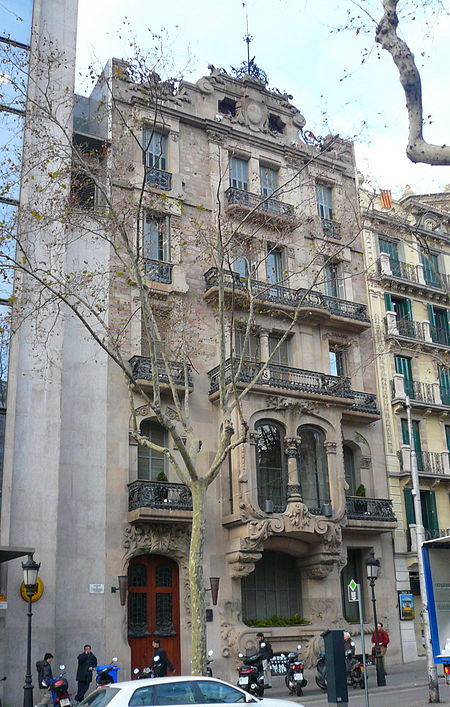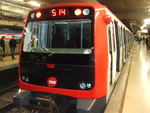Casa Bonaventura Ferrer
1906 establishments in SpainArt Nouveau housesBuildings and structures in BarcelonaCulture in BarcelonaEixample ... and 6 more
GràciaHouses completed in 1906Houses in CataloniaModernisme architecture in BarcelonaPasseig de GràciaTourist attractions in Barcelona

Casa Bonaventura Ferrer is a building located at number 113 of Passeig de Gràcia in Barcelona, Catalonia, Spain, and rear facade at number 6 in the Riera de Sant Miquel. It is a project of the architect Pere Falqués i Urpí following a Modernisme or Art Nouveau style, being erected in 1906. Since 1979 it has been listed as an historical and artistic heritage of Barcelona. The building is best known in the city as "El Palauet" (cute little palace) for its extraordinary beauty and reduced size. In 2010, the building was remodeled and converted into a luxury boutique hotel under the name of "El Palauet".
Excerpt from the Wikipedia article Casa Bonaventura Ferrer (License: CC BY-SA 3.0, Authors, Images).Casa Bonaventura Ferrer
Carrer de la Riera de Sant Miquel, Barcelona
Geographical coordinates (GPS) Address Nearby Places Show on map
Geographical coordinates (GPS)
| Latitude | Longitude |
|---|---|
| N 41.39665 ° | E 2.1580833333333 ° |
Address
Església i convent de Pompeia
Carrer de la Riera de Sant Miquel
08001 Barcelona (Gràcia)
Catalonia, Spain
Open on Google Maps







